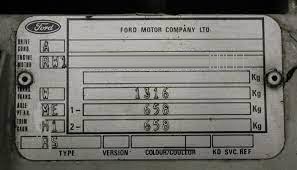How to Check the VIN Number on Your Car
Understanding how to check the VIN number on your car can be valuable for various reasons, including researching its history, verifying authenticity, and ensuring compliance with regulations. The Vehicle Identification Number (VIN) is a unique code that serves as a fingerprint for your car. Comprising a series of characters, the VIN holds crucial information about your vehicle’s make, model, year of manufacture, and more. In this guide, we’ll explore the steps involved in checking the VIN on your car and the significance of this identification code.
What is a VIN?
The VIN is a standardized code assigned to every motor vehicle during its production. Typically consisting of 17 characters, the VIN acts as a unique identifier for a specific vehicle. It provides a wealth of information about the car’s characteristics, manufacturing details, and history.
Why Check the VIN Number?
- Vehicle History: Checking the VIN allows you to access crucial details about your car’s history, including any accidents, title issues, or odometer discrepancies. This information is valuable when buying or selling a used car.
- Authenticity Verification: Verifying the VIN helps confirm the authenticity of your vehicle. It ensures that the VIN matches the details provided in the car’s documentation and prevents potential fraud or theft.
- Recall Information: Manufacturers use the VIN to identify vehicles affected by recalls. By checking the VIN, you can determine if your car is subject to any safety recalls or service campaigns.
- Insurance and Registration: VIN verification is essential for insurance purposes and during the vehicle registration process. It ensures accurate documentation and compliance with legal requirements.
How to Check the VIN Number on Your Car:
- Locate the VIN: The VIN is typically located in specific areas of the car, including the dashboard near the windshield, the driver’s side door frame, the engine block, and the vehicle’s registration and insurance documents.
- Check the Dashboard: The most common and accessible location for the VIN is on the dashboard near the windshield on the driver’s side. Stand outside the vehicle and look through the windshield to find the VIN plate.
- Examine the Driver’s Side Door Frame: Open the driver’s side door and inspect the door frame. Many vehicles have a label or plate on the door frame that displays the VIN along with other manufacturing information.
- Inspect the Engine Block: For some vehicles, especially motorcycles and older cars, the VIN might be stamped on the engine block. Open the hood and look for the VIN near the engine. Check engine number.
- Refer to Documentation: If you can’t find the VIN on the vehicle itself, check the registration and insurance documents. The VIN is often included in these paperwork.
- Use Online VIN Check Services: Numerous online services allow you to enter your VIN to receive comprehensive reports on your vehicle’s history, recalls, and other relevant information. Some services may be free, while others require payment for detailed reports.
Checking the VIN number on your car is a fundamental step in understanding its identity and history. Whether you’re buying a used car, verifying documentation, or simply staying informed about recalls, knowing how to locate and interpret the VIN is an essential skill for every vehicle owner. Regular checks ensure that your car remains authentic, compliant, and safe on the road.
Buying a used VW. Buying used vauxhall, BMW, Jaguar, Ford, Volvo, Range rover, Bentley, Aston Martin, Porsche, Ferrari, Lamborghini, Maserati, Hyundai, Tesla, Honda, Pagani

